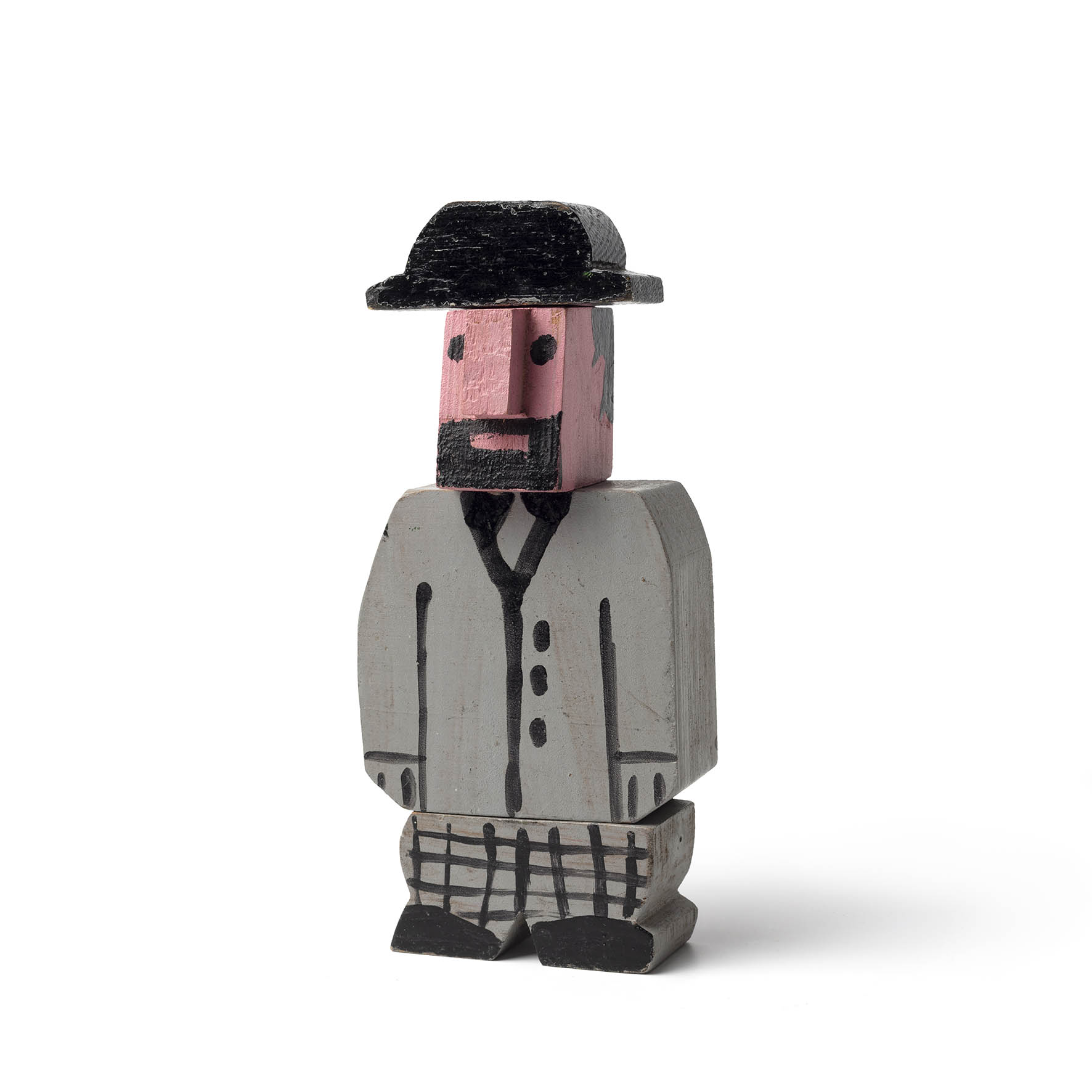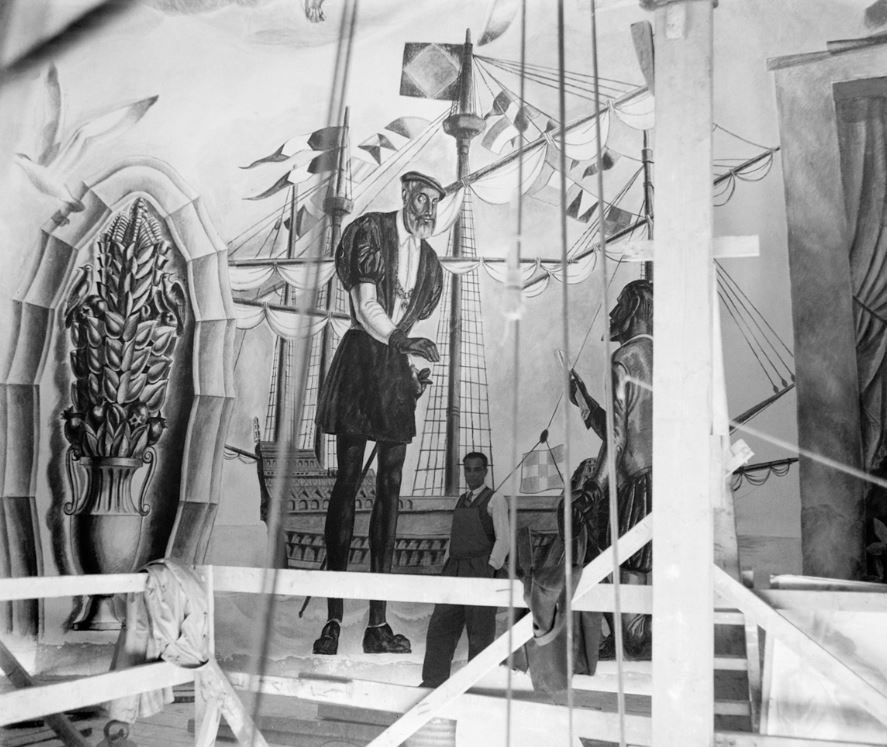Exhibitions
Torres-García returns to Sala Parés
A comprehensive view of his career on his 150th anniversary.

The Sala Parés has been celebrating since Saturday, the 150th anniversary of the birth of Joaquín Torres-García , one of the most prominent figures in modern art of the 20th century. With the exhibition "TORRES-GARCÍA. Between Noucentism and the Avant-Gardes (1891-1934)", the artist's deep bond with Catalonia and his bond with Sala Parés, which hosted his first exhibition on 1897. The exhibition brings together around 120 works that offer a complete overview of his artistic development, from the beginnings marked by Noucentisme to the achievement of constructivism
Torres-García arrived in Catalonia in 1891, aged just 17, initially settling in Mataró with his family. He soon moved to Barcelona, where he decided to devote himself fully to art, studying at the Escola de la Llotja and connecting with the most influential cultural circles of the time. The artist's first works, exhibited in this exhibition, are a testimony to his initial training. A significant example is the copy of a Goya self-portrait that opens the Los Caprichos series, as well as a Goya-inspired composition based on the Salpêtrière mental sanatorium in Paris. These pieces, with marginalized characters and scenes that suggest a thread of madness, connect with the miserabilism typical of second-generation Catalan modernism and with the spirit of the great art magazines of the time that were coming.
Torres-García's relationship with Noucentisme was very important, especially for the central role he played in the decoration of the Saló de Sant Jordi in the Palau de la Generalitat between 1912 and 1917. This stage of his career is represented in exhibition with preparatory works for these frescoes, which synthesized classical ideals with a strong symbolic and Catalanist component, such as 'La Catalunya Eterna': the idealized figure of Catalonia, embodied in a woman holding the eternal fire, is combined with other elements such as the olive tree, the figure of Pallas Athena and the four bars of the coat of arms of Catalonia, all together in a composition of great visual force. However, today the way in which these frescoes are exhibited in the Palau de la Generalitat alters the original vision conceived by Torres-García, since the heights of the ceilings do not allow the dialogue between the pillars located at the bottom and those at the top to be reproduced ·legories in the upper lunette, which represented the ideal in an almost Platonic world.

The year 1916 marks a turning point in his work. At this moment, Torres-García begins to detach himself from the theoretical rigidity of Noucentisme to delve into a freer and more intuitive painting. At this stage, a clear simplification of shapes and silhouettes is appreciated, with a prominent use of black strokes to delimit contours and give strength to the main elements. This synthesis between post-impressionist and avant-garde influences and this stylistic change is accentuated from 1917, when Torres-García begins to address themes related to urban modernity with scenes full of dynamism.
From his time in New York, the exhibition also includes a selection of unpublished drawings that had only previously been shown in an exhibition called Trazos de Nueva York, which was presented in the same city and later in Buenos Aires. It is the first time that these sketches can be seen in Catalonia. Made in ink, they are nimble sketches that capture characteristic elements of the modern city, such as bridges, ships, carts and horses, from a perspective that highlights Torres-García's attraction to the movement inherent in cities.
.jpg) Miscelánea de Nueva York, Joaquín Torres-García (1920)
Miscelánea de Nueva York, Joaquín Torres-García (1920)
Between the mid-1920s and almost the 1930s, Torres-García lived a time of great complexity, as his letters to Rafael Barradas testify. In these, he reveals his fascination with classicism, which he considers a vehicle to connect with a higher and transcendent order. At the same time, the artist wishes to represent modernity, but not in a mimetic way. This tension between classicism and modernity leads him to explore influences from Cubism and reinterpret early works by Picasso. Gradually, Torres-García develops a language of his own and begins to use the grid as a tool to freeze fragments of modern reality into higher-order compositions. This language will be definitively consolidated from 1929 with its constructivist art. Sergio Fuentes , curator of the exhibition, underlines the importance of this entire journey to understand how Torres-García sought to transcend aesthetic representation to connect with a universal and symbolic dimension of art.
 'Hombre gris', Joaquín Torres-García (1925-1926)
'Hombre gris', Joaquín Torres-García (1925-1926)
At the same time, the exhibition dedicates a special section to the toys that Torres-García created throughout his career, which, conceived with a strong pedagogical spirit, led him to found the Asociación del Juguete Desmontable between the years 1917 and 1919. The value of these toys lies in their ability to encourage constructive thinking fostered in German pedagogical theories that emphasized learning through game and in the destruction and reconstruction of the pieces that allowed exploring new forms.
Over time, Torres-García's toys evolved into increasingly abstract and geometric designs, culminating during his time in New York, where the forms reach their extreme of simplification and abstraction, as exemplified by iconic pieces such as 'Hombre Gray'
Ultimately, the exhibition at Sala Parés pays tribute to Torres-García's legacy while reaffirming the gallery's commitment to the dissemination and reinterpretation of key figures in modern art. The exhibition offers a comprehensive view of the artist's evolution and highlights, with emphasis, the career of one of the most relevant creators of the 20th century.
 'Mujeres de pueblo', Joaquín Torres-García (1911)
'Mujeres de pueblo', Joaquín Torres-García (1911)









